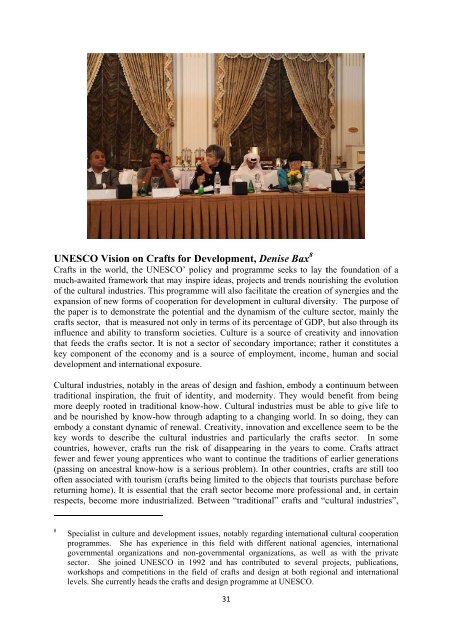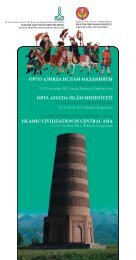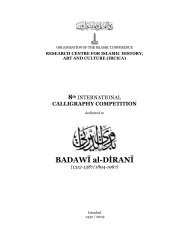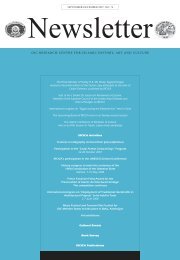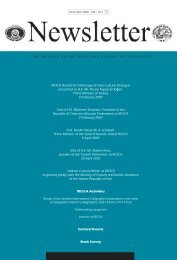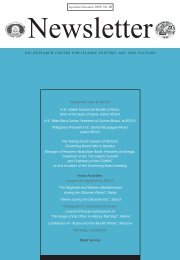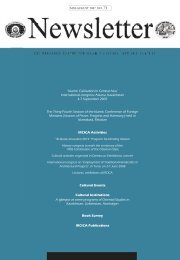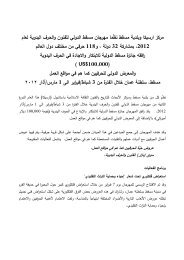hlights o - ircica
hlights o - ircica
hlights o - ircica
- No tags were found...
Create successful ePaper yourself
Turn your PDF publications into a flip-book with our unique Google optimized e-Paper software.
UNESCO Vision on Crafts for Development, Denisee Bax 8Crafts in the world, the UNESCO’ policy and programme seeks to lay the foundation of amuch-awaited framework thatt may inspire ideas, projects and trends t nourishing the evolutionof the cultural industries. Thiss programme will also facilitate the creation of synergiess and theexpansion of new forms of cooperation for development in cultural diversity. The purpose ofthe paper is to demonstrate the potential l and the dynamism off the culturee sector, mainly thecrafts sector, that is measurednot only inn terms of its percentage of GDP, but also through itsinfluence and ability to transform societies. Cultureis a source of creativity and innovationthat feeds the crafts sector. It is not a sector of secondary importance; rather it constitutes akey component ofthe economy and is a source ofemployment, income, human and socialdevelopment and internationall exposure.Culturall industries,notably inthe areas of design and fashion, embody a continuumbetweentraditional inspiration, the fruit of identity, and modernity. They would benefit from beingmore deeply rootedin traditional know-how. Cultural industries must be able to give life toand be nourished by know-how through adapting toa changing world. Inn so doing, they t canembodya constantt dynamic of renewal. Creativity, innovation and excellence seem to t be thekey words to describe the cultural industries and particularly the crafts sector. In somecountries, however, crafts runthe risk of disappearing in the years to come. Crafts attractfewer and fewer young apprentices who want to continue the traditions off earlier generations(passingon ancestral know-how is a serious problem). In other countries, crafts are still toooften associated with tourism (crafts being limited to the objects that tourists purchase beforereturning home). Itis essential that the craft sector become more professional and, incertainrespects, become more industrialized. Between “traditional” crafts and “cultural industries”,8Specialist in culture and development issues, notablyregarding internationall cultural cooperationprogrammes. She has experience in this field with different national agencies, internationalgovernmental organizationsand non-governmentalorganizations, as well as with the privatesector. She joined UNESCO in 19922 and has contributed to t several projects, publications,workshops and competitionss in the fieldd of crafts and design at a both regional and internationallevels. She currently heads the crafts and d design programme at UNESCO.31


